Last Updated on March 3, 2025 by Ellen
We’ve had a terrific two weeks tracking across Transylvania. It’s been fun to play ‘tourist’ again.
The notorious northwest section of Romania is beautiful, ancient, interesting, and historically significant as the place in Europe where east and west met – and fought – for thousands of years.
Christians, Muslims, Orthodox Catholic, Protestant, Dacians, Romans, Ottomans, Huns, Persians, Germans, Hungarians, Austrians, Russians, communists, fascists, socialists, capitalists — they’ve all been here and left their mark.
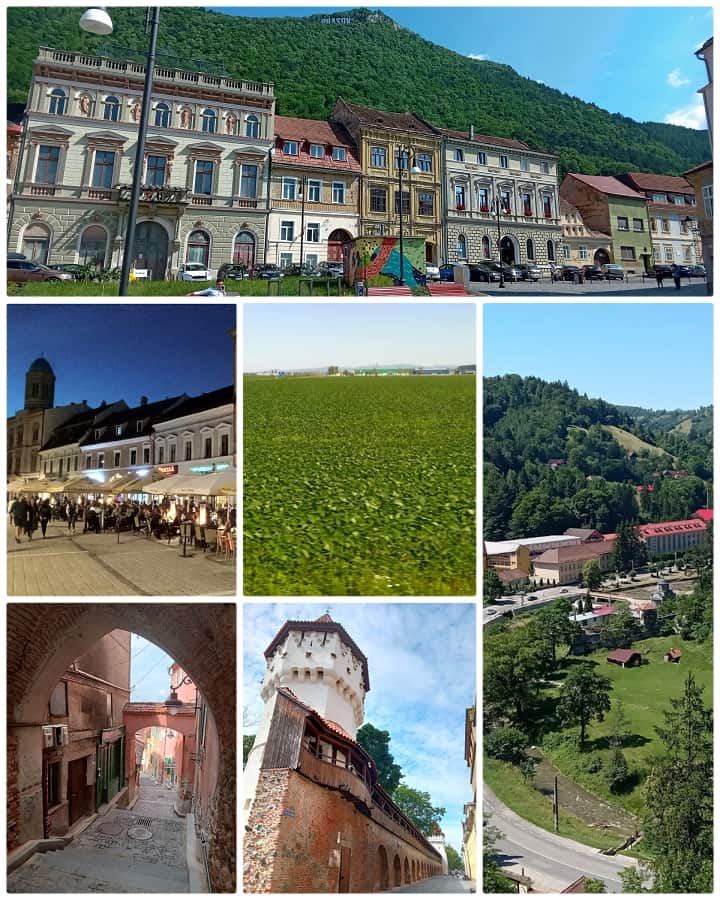
And of course, Transylvania is where Dracula comes from. At least, it is where Bram Stoker’s 1897 gothic horror novel ‘Dracula’ was set. Stoker never came here, but Romanian friends told him medieval tales relating to Vlad Dracul (Vlad the Impaler – a sadistic 15th century leader). These legends apparently inspired his writings.
Regardless, the Transylvanian region is stunning. Plains of corn, wheat, soybeans, sunflowers in the west, give rise to the rugged Carpathian mountains in the east. In addition, as seen in these photos from where we’ve stayed; Timisoara, Alba Iulia, Sibiu, and Brasov all boast beautifully restored medieval ‘old towns’ often compared to historic Vienna or Paris.
Transylvanian ‘old towns’ to visit:
Transylvania attractions
We’ve posted individual blog entries about the different cities, but aside from the historical centers, there are a few special attractions in Transylvania that shouldn’t be missed.
Indeed, they rate with some of the top tourist activities that we’ve ever enjoyed.
Other adventures on Earth:
Transfagarasan Road
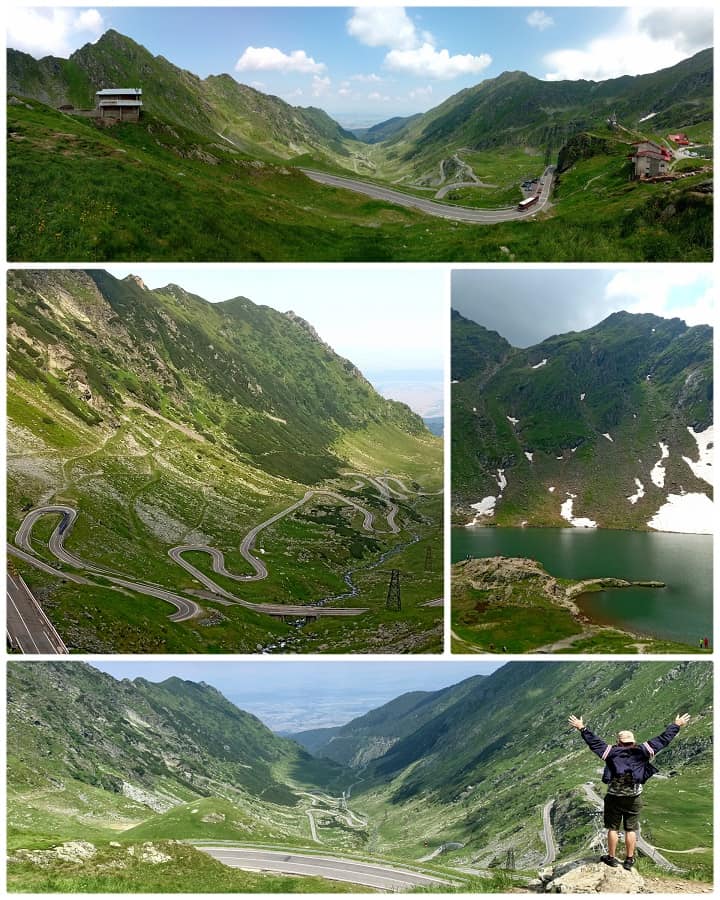
You’ve likely seen this road in some automobile commercial. If you haven’t, check out the incredible photos here. The roadway – constructed in the 1970s by order of Romanian dictator Nicolae Ceausescu – has been dubbed “most beautiful road on earth.” Who can argue with that? Unbelievable!
We hired a private car to drive the most stunning sections of the mountain pass roadway and were awed by the setting and engineering. Our day trip with Brasov Day Trips to the glacial Balea Lake area cost $125 plus tip. Our driver, Florian Ivan, spoke great English and was a wealth of information about Romania and it’s history – highly recommended.
Due to snow, ice, avalanches, and rockfalls, the Transfagarasan road is only open during summer months – but there is a lengthy cable car that runs virtually year-round to the best viewing point and glacial lake with tourist services. The only other option we could find, at similar cost, for those without transport is the Balea mini-bus service from Sibiu.
Turda Salt Mine
Salt mines are not uncommon anywhere on earth. Man has needed and collected salt for millennia. I myself have been in the massive, dark, under-lake, salt mine in Cleveland, Ohio, USA numerous times for TV news stories back in my working days.
Amazingly, the Turda, Romania mine dates back well over 1,000 years. More astounding: it is now an amusement park – and more!
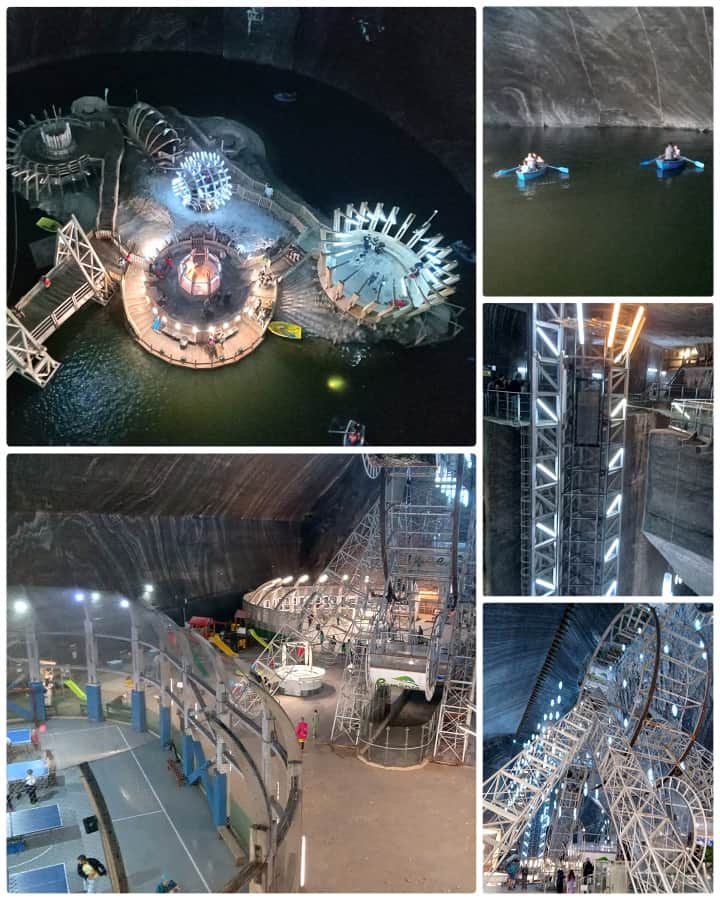
From Alba Iulia we took a standard inter-city bus to Turda – then a local bus to the salt mine entrance (reversed upon departure). Most foreign visitors arrive via private tour bus costing around $100 per person. Our total ‘Earth Vagabond style” public transport was about $20 round trip, plus the $11 per person entry fee, and $6.50 for rowboat rental INSIDE the mine. Under $50 total for two people – with only a minimal amount of language and direction confusion. Fun!
A lake with rowboats is only one of the crazy entertainment options inside the nearly 400-foot-deep mine. There is a Ferris wheel, playground, put-put golf, billiards, ping pong, performance stage, snack bar, gift shop, and museum exhibits regarding the mine history and tourist conversion. There is a free elevator available – with long lines – so we walked the 20+ story, wooden stairways both down and up.
The place claims to be the deepest and most spectacular underground formation and entertainment area on earth. Seems likely. It was a very unique and freaky experience. And especially enjoyable on a day when surface temperatures were in the 90s (mine temps are a constant 50 to 55F).
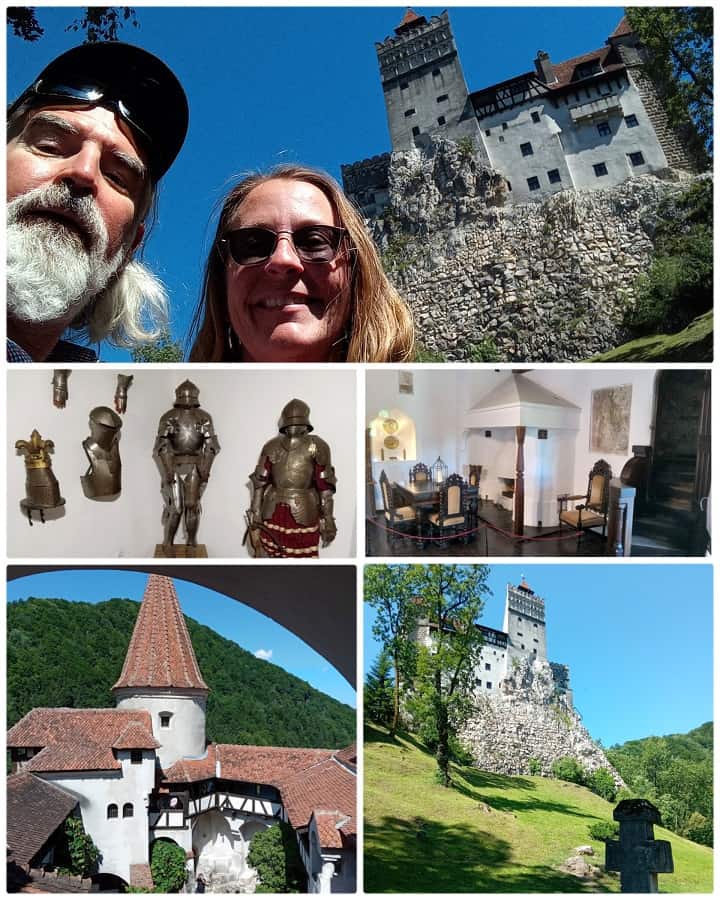
Bran Castle (Dracula’s Castle)
To be clear, this is NOT really Dracula’s castle. Not the residence of Vlad the Impaler – the ruthless, mid-15th century, Romanian leader. His true ‘fortress’ named Peonari Castle does still exist (closer to the Transfagarasan roadway). But it’s in ruins and closed to the public because of its remote and decrepit condition – and the presence of many wild black bears.
The Bran Castle, in the town of Bran, about 40 minutes public bus ride from Brasov, is the place popularized – and now marketed – as Dracula’s home. In reality, Bran Castle is an imposing, ancient fortress built over centuries to guard a trade route from Istanbul to Europe. In the early 1900s the structure was gifted to the Romanian royal family who restored, transformed, and lived in it.
Regardless of the touristic nature of the attraction, we found it to be fun, informative – and for $13 per person, a must-do for anyone visiting the area.
We took some fabulous photos, learned lots about the Romanian royals (in the 1950s they resettled in Newton, Massachusetts, USA), and the fake Dracula drama was not too overwhelming. Another favored moment: our picnic lunch on the grass outside the castle after our tour (see photo below).
A few more Bran Castle tourist tips:
- go early on weekdays (big tour busses arrive around noon)
- the public bus from Brasov bus station 2 (autogara 2) runs hourly and costs $5.50 right to the castle
- lots of restaurant options, cafés, and Dracula souvenir shops line the street outside Bran Castle
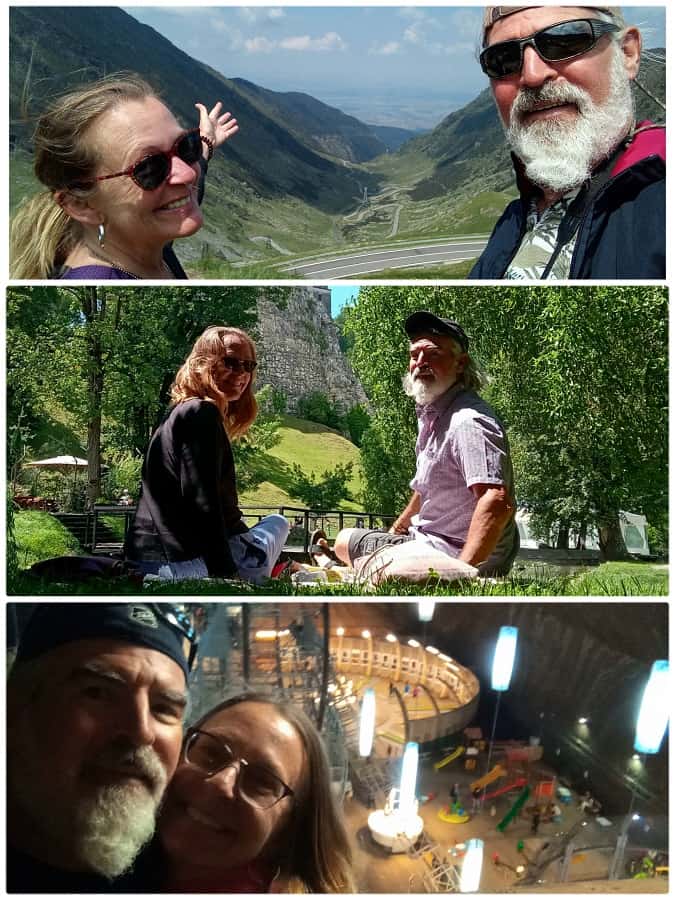
Back to “slow travel” in Bucharest
We’ve now settled in for a month in Bucharest, Romania – another place with an extensive, varied, and unbelievable history (we already took a “Life Under Communism” tour).
After over 40 days of international travel (India to UAE to Serbia to Romania), and eight short-term, Airbnb stays, it feels good to have a stable home for a while. In fact, the 40-day ‘whirlwind’ was THE longest period we have ever gone as ‘tourists’ in our nearly eight years of wandering.
Ironically, personally I’m ‘comfortable’ here – in Romania. It actually feels like the upper Midwest in America — like Western Pennsylvania. Same general latitude, same weather, same hills, same trees and forests, same urban/industrial decay and redevelopment efforts, same churches, same grit, same smells, same sensibilities. Stay tuned for more info on how how it goes and what it costs.
As always, be thankful and generous, happy trails & more beer.
Life is NOW!
About Theo
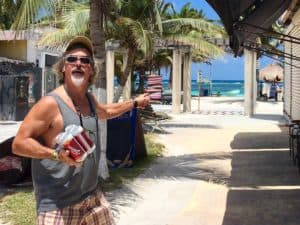
Theo (also called Tedly) retired early from the news business to wander the planet with his wife, Ellen. He enjoys exploring all Earth has to offer from jungles and beaches to volcanoes and deserts, always drinking beer along the way.
